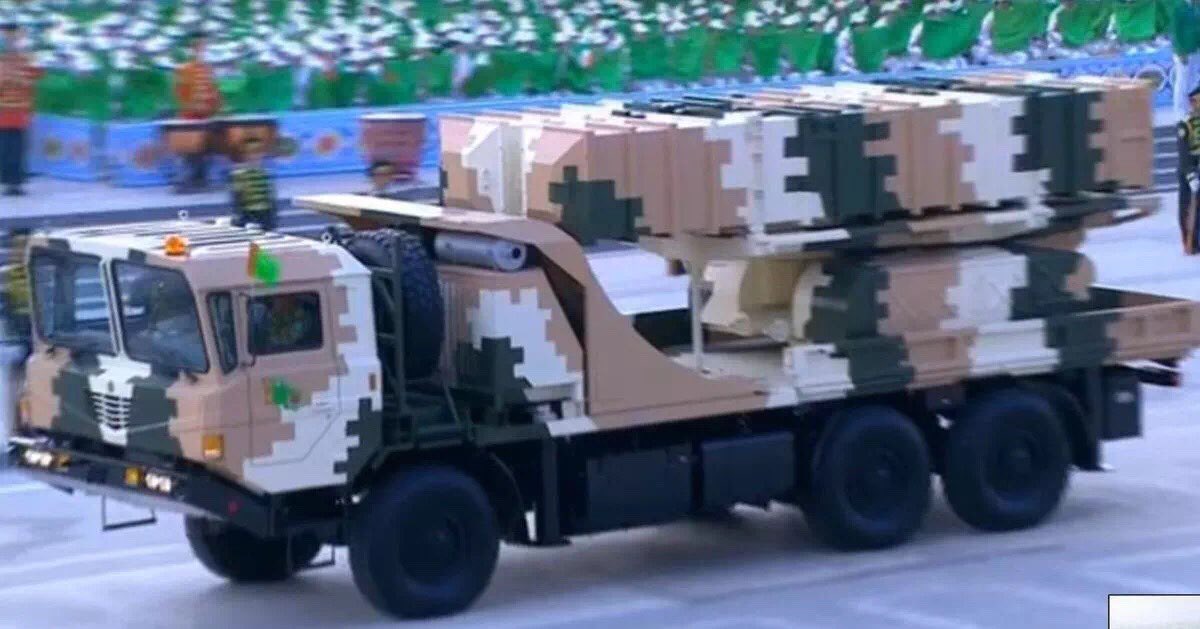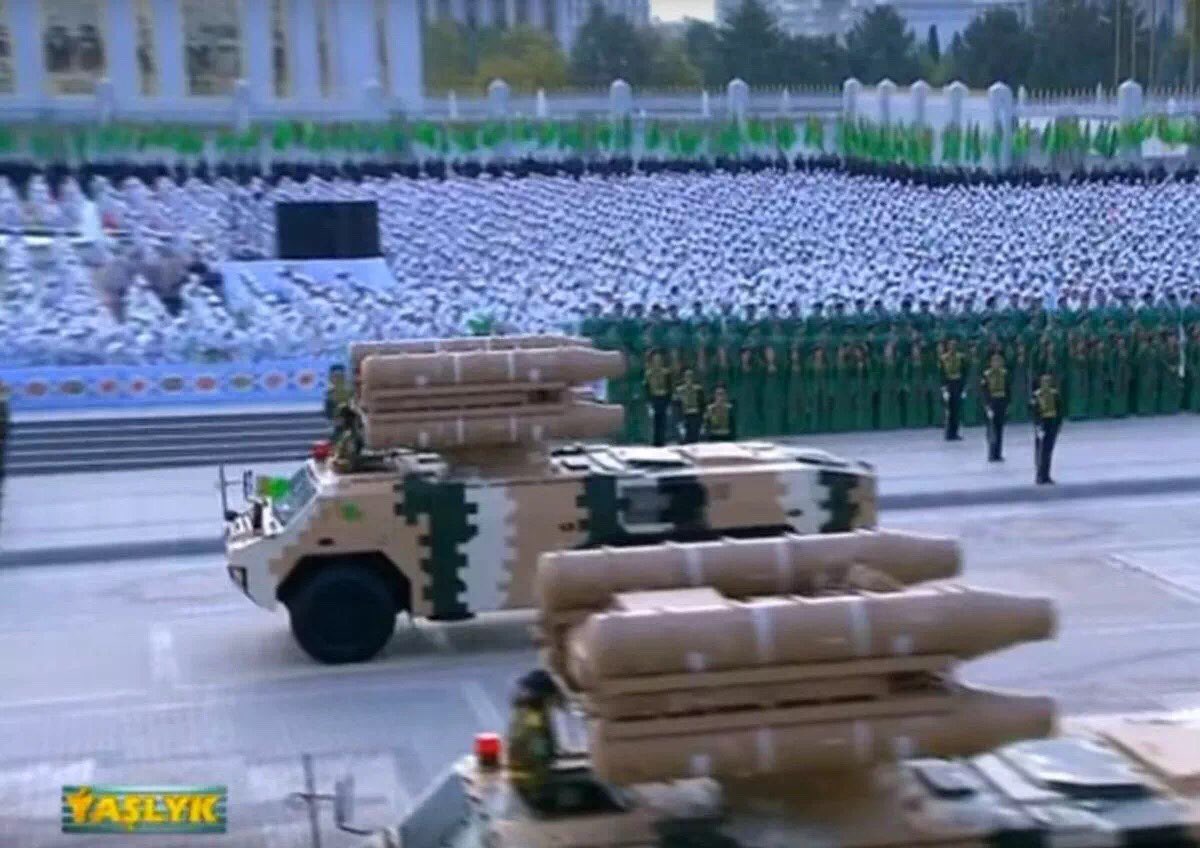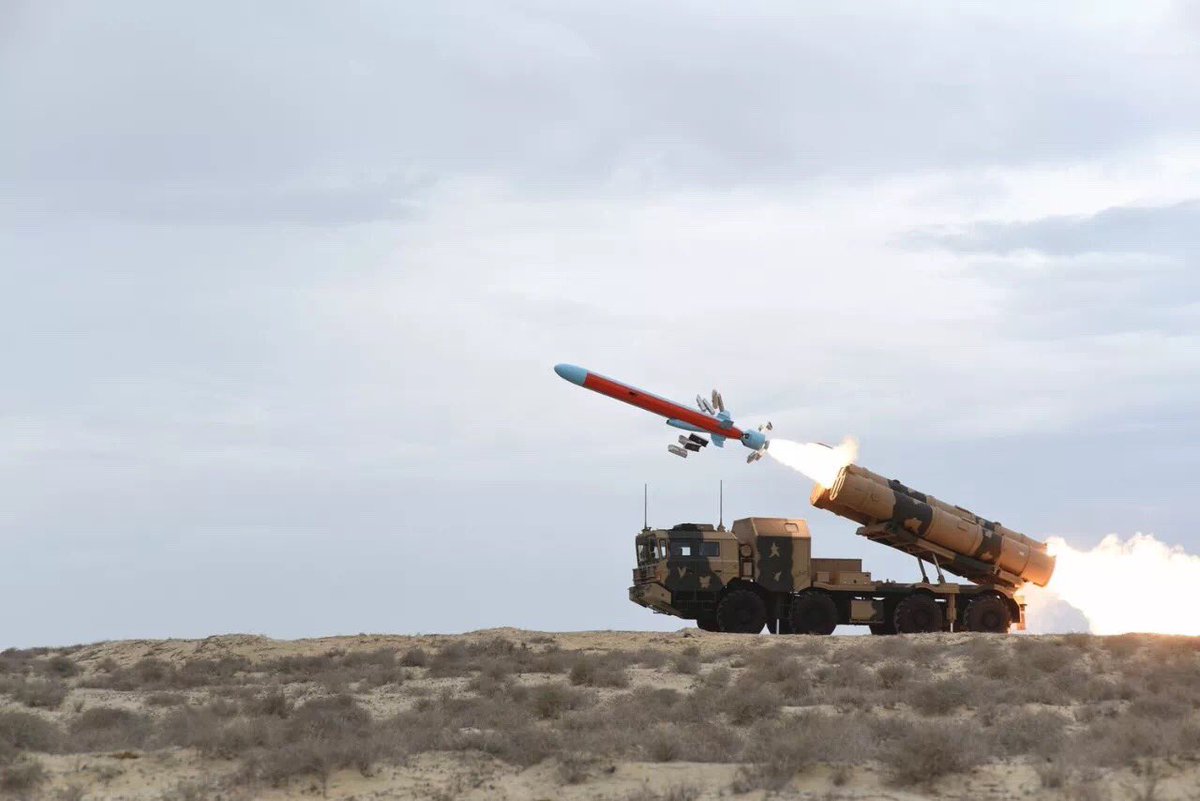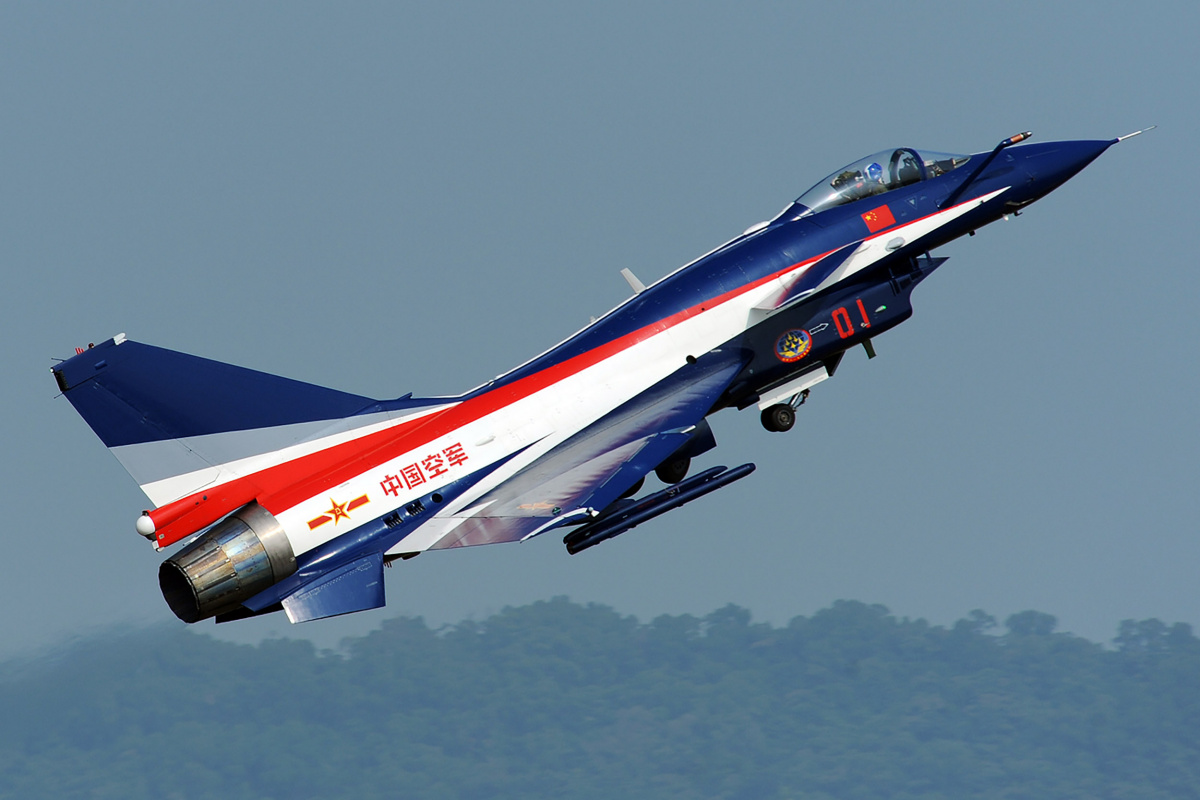You are using an out of date browser. It may not display this or other websites correctly.
You should upgrade or use an alternative browser.
You should upgrade or use an alternative browser.
Chinese military exports to other countries
- Thread starter tphuang
- Start date
Hendrik_2000
Lieutenant General
Some more picture
After the FM-90, the KS-1A and the FD-2000, the Turkmen army now has another Chinese SAM system, the MANPAD QW-2. It is practically every anti-aircraft in the country has gone into "Made in China".




After the FM-90, the KS-1A and the FD-2000, the Turkmen army now has another Chinese SAM system, the MANPAD QW-2. It is practically every anti-aircraft in the country has gone into "Made in China".




41th Armoured Brigade of Algerian Army displayed vehicles of the PLZ-45 howitzer system during the visit of the Chief of Staff. 
The back of the ammo supply vehicle; looks like Chief wanted to know more about it.

702-D Meteorological Radar (left) and BL-904(704A) Weapon Locating Radar

Command Vehicle, PLZ-45 and Ammunition Supply Vehicle

The back of the ammo supply vehicle; looks like Chief wanted to know more about it.

702-D Meteorological Radar (left) and BL-904(704A) Weapon Locating Radar

Command Vehicle, PLZ-45 and Ammunition Supply Vehicle
i don't think this has been posted. Apparently already in service with Algeria, Bahrain, Venezuela.
Algeria confirms delivery of SR5 multiple rocket launchers from China
by
Algeria’s acquisition of SR5 multiple rocket launchers has been confirmed during the exercises in the 4th military district of the People’s National Army of Algeria.
The People’s National Army of Algeria has released pictures of its recently delivered China-made SR5 multiple rocket launchers during live-fire military exercise.
The SR5 is a medium-range Multiple Launch Rocket System (MLRS) designed and manufactured in China by the company NORINCO (China North Industries Corporation). The MLRS based on a Taian TA5310 6×6 truck chassis and carries two pods that can fire either 122 mm (20 per pod) or 220 mm (six per pod) rockets.
Rockets are fitted with various warheads, including HE-FRAG, incendiary, smoke and illumination. Also, there are cargo warheads with anti-tank or pre-fragmented anti-personnel submunitions. Some rockets have a GPS guidance for precision strikes.
Rocket pods are factory-fitted and sealed. These double as transport containers and launchers. A standard 220 mm pod contains 6 rockets. These rockets have a range of up to 70 km.
According to the current information, the SR-5 is in service with Algeria, Bahrain, Venezuela and possibly some other countries.
Algeria confirms delivery of SR5 multiple rocket launchers from China
by
Algeria’s acquisition of SR5 multiple rocket launchers has been confirmed during the exercises in the 4th military district of the People’s National Army of Algeria.
The People’s National Army of Algeria has released pictures of its recently delivered China-made SR5 multiple rocket launchers during live-fire military exercise.
The SR5 is a medium-range Multiple Launch Rocket System (MLRS) designed and manufactured in China by the company NORINCO (China North Industries Corporation). The MLRS based on a Taian TA5310 6×6 truck chassis and carries two pods that can fire either 122 mm (20 per pod) or 220 mm (six per pod) rockets.
Rockets are fitted with various warheads, including HE-FRAG, incendiary, smoke and illumination. Also, there are cargo warheads with anti-tank or pre-fragmented anti-personnel submunitions. Some rockets have a GPS guidance for precision strikes.
Rocket pods are factory-fitted and sealed. These double as transport containers and launchers. A standard 220 mm pod contains 6 rockets. These rockets have a range of up to 70 km.
According to the current information, the SR-5 is in service with Algeria, Bahrain, Venezuela and possibly some other countries.
On 14.Jan.2018, the handover ceremony of the last two Durjoy-class LPC BNS Durgam and BNS Nishan was held at Bangladesh. The two 675t ships were jointly built by Wuhan Shipbuilding Industry and Khulna Shipyard and were commissioned on 08. Nov. 2017.
This is the first time for Wuhan Shipyard to serve as the general contractor in an overseas joint construction project.


This is the first time for Wuhan Shipyard to serve as the general contractor in an overseas joint construction project.


Hendrik_2000
Lieutenant General
CASIC seems to have signed an export contract for its C602 anti-ship missile in coastal defense version. Range 290 km, military load 300 kg.


Equation
Lieutenant General
Could the next German fighter engine be supply by China one day?
China May Have Solved the One Thing That Was Poised to Stop Its Military Rise

Chinese engineering has become so advanced that German jet engines could soon get a major boost from China.
Officials in China have begun talks to sophisticated aerospace technology and manufacturing equipment to Germany for the production of high-performance jet engines.
As China moves to rapidly build its commercial and military aviation industry, the nation has made significant engineering breakthroughs, most notably in turbine blades, which convert the heat from fuel combustion into thrust. Turbine blades are one of the most critical components of an airplane, determining a jet engine’s safety, power and endurance.
Engineers in China have developed new processes that can make lighter and stronger blades using a hollow structure as well as single-crystal alloys that can withstand high temperatures and a special coating to facilitate cooling. These advances mean Chinese-made turbine blades are able to withstand temperatures several hundred degrees Celsius higher than the melting point of metallic alloys.
These advances are at the center of a possible sale to Germany along with manufacturing equipment that uses lasers to drill ultra-fine holes in turbine blades to keep blades cool by increasing air flow.
“Our machine has outperformed [Germany’s] on some benchmarks,” an anonymous source involved in the negotiations the South China Morning Post. “The Germans have seen and grown interested in our technology.”
Discussions for the sale are still in the early stages, but even the possibility of an agreement with Germany, which the world’s first production-ready jet engine and has long been revered for its design and manufacturing prowess, is a major victory for China as it seeks to shift its reputation away from cheaply made knockoffs to high-end innovation.
Aerospace is one of the key sectors of the” initiative, which calls for massive government investment to create thriving self-sufficient domestic industries. But long before the initiative was announced, China has been hard at work developing domestically-produced military aircraft.
In 2011, China the world with the J-20, the nation’s first stealth fighter meant to rival America’s F-22 Raptor. With the J-20, China became only the second nation after the United States with a tactical stealth jet in service.
Just three years later, China the J-31 stealth multirole fighter jet, which looks remarkably like the American-made F-35 Joint Strike Fighter. Analysts the Chinese built the J-31 using stolen F-35 blueprints.
China’s fifth-generation fighters currently rely on Russian engines, but recent breakthroughs have given the nation the ability to manufacture their own. In September, images China had built a stealth engine for the J-20 equipped with serrated afterburner nozzles and interior flaps to help minimize its radar signature.
As China turns its attention to commercial airliners, it is only a matter of time before it begins to produce jet engines for commercial use.
In China’s rapid rise, it has previously turned to German aerospace companies to gain intellectual property and industrial know-how. In 2013, ChinaGermany’s Thielert Aircraft Engines after it filed for bankruptcy. The agreement included Thielert’s technology as well as their manufacturing facilities and equipment.
More recently, China has set its sights on Cotesa, an innovative German aerospace manufacturer that supplies parts for Airbus and Boeing. But the deal is currently on hold pending a by the German government under new rules that grant the state more authority to block foreign takeovers.
The rules were passed in the midst of growing concerns of Chinese companies acquiring German and other EU companies operating in sensitive industries like aerospace, robotics and computer chips.
China’s plan to supply Germany with jet engine turbine blade technology is likely to face similar hurdles as Germany partners with Pratt & Whitney, General Electric and other American engine manufacturers. Even if German authorities approve the deal, the sale could still be blocked by the U.S. government which considers jet engine manufacturers as strategic domestic companies.
Regardless of whether this deal succeeds or not, it is apparent that China is quickly becoming an elite player in the Jet Age.
D
Deleted member 13312
Guest
Well if anything, I am betting that that is what is going to happen. That the US will block the deal, which is more likely then not under Trump. But Kudos for China all the same, necessity is the mother of all innovation and the US/ EU embargo of jet engine technology have only prompted China to go on its own.Could the next German fighter engine be supply by China one day?






